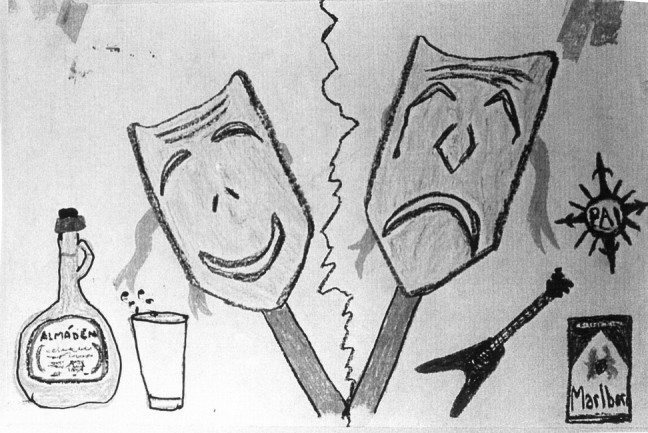View the original journal here
Shirley Riley
Understanding adolescents is a challenge at best, and the adolescent who is ill or suffering from psychological stress is an even greater conundrum. The physician treats the physical problem but often puzzles over where to find therapeutic treatment for this age group. Teenagers are sensitive about their image, particularly with their peers, and often put themselves at emotional risk rather than confess that they need help from a “shrink.” Furthermore, their view of the “talking” psychotherapies has been shaped by the movies, and they often think that these therapies are only for serious “mental” cases. In contrast, they come to art therapy without such preconceived ideas, and this form of therapy has proved effective with adolescents.
Imagery taps into a person’s earliest way of knowing and reacting to the world; therefore, it is not foreign to the experience of learning. Art as a language of therapy, combined with verbal dialogue, uses all of our capacities to find a more successful resolution to our difficulties.
In art therapy, the client is asked to make a collage, make some marks on paper, or shape a small piece of clay to illustrate the difficulties that have brought them to therapy. The art therapist does not interpret the art piece, and the clients are free to share as much of the meaning of their art as they choose. Adolescents, in particular, are attracted to making symbols and graphic depictions; therefore, they are more attracted to using art as language than to verbal questioning. When the negative behavior is illustrated, it is then external to the individual, and the behavior thus becomes the problem, not the individual.
This externalization of an internal stress or by the creation of “nonartistic art” allows both the therapist and the client to better address the problem. The therapist gains greater knowledge of the problem because the client uses metaphor and narrative to explain the product. The “art” allows clients to distance themselves from their own dilemma and, in that manner, work with the therapist toward alternative solutions to a problem.

A 13-year-old boy draws the 2 sides he sees of his mother who battles alcoholism
CONCLUSION
Clinical art therapy can be effective for adolescents who usually see it as a nonthreatening form of treatment. The art that the adolescent produces can help the therapist gain some idea of the youth’s concerns and life circumstances, especially those situations that are too risky to reveal or too personally embarrassing to relate. This awareness better equips the therapist in efforts to protect and support the adolescent during this turbulent time of life.
This article gives examples of different ways art is used to express emotions. It acts as a tool to help people understand their own feelings and explain it through a “nonthreatening form of treatment.” While major surgeries can cause a lot of emotional upset, it is important to consider all areas of recovery whether it be emotional or physical.



